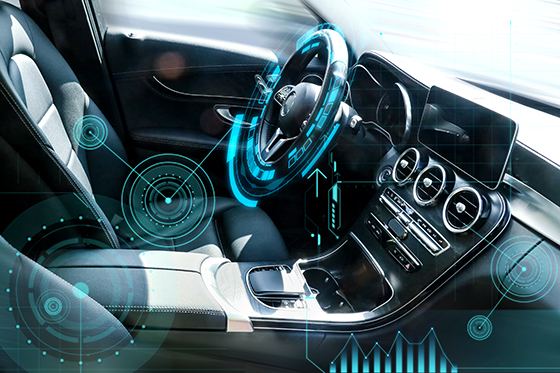Autonomous driving has become a rapidly developing and crucial trend in the automotive industry. The widespread application of autonomous driving technology has not only significantly improved the safety and convenience of driving operations, but more importantly, it has fundamentally reshaped people’s daily travel patterns. In the process of autonomous driving technology, automotive PCB plays an indispensable and key role.

Autonomous driving technology involves multiple core systems that rely on high-performance, high-reliability automotive PCBs to achieve their functions. Main applications include:
1) Sensor Systems
Sensors are the "eyes" of autonomous driving and are responsible for collecting data on the surrounding environment. Technologies such as LiDAR, millimeter-wave radar, cameras, and ultrasonic sensors all rely on high-density, multi-layer PCBs. These PCBs support high-speed signal processing and enable the rapid transmission of data collected by sensors to the on-board computing platform. In addition, since autonomous driving requires real-time response, automotive PCB design must ensure signal integrity and anti-interference capabilities.
2) Control Units
The onboard computing platform for autonomous driving is the core of all data processing, responsible for analyzing and making decisions based on the collected information. Control units typically consist of complex multilayer PCBs, integrating processors, memory, communication modules. Through these PCBs, complex algorithmic calculations such as path planning, object recognition, and real-time decision-making are performed.
3) Advanced Driver Assistance Systems (ADAS)
ADAS is a key component of autonomous driving, providing functions such as adaptive cruise control, lane -keeping assistance, and collision warning. Automotive PCBs in these systems handle high-frequency signals and data transmission, communicating in real time with sensor systems to ensure the system’s accuracy and reliability.
4) Communication Systems
Autonomous vehicles need to communicate with other vehicles (V2V) and infrastructure (V2I) to acquire real-time road conditions, navigation information, etc. PCB design is crucial in high-frequency wireless communication modules and in-vehicle networks (such as CAN, LIN, Ethernet). High-quality PCBs can ensure stable transmission of wireless signals and enhance network reliability.
5) Power System Management
In electric and hybrid vehicles, autonomous driving is particularly important for the management of the powertrain. The role of multilayer PCB in battery management system (BMS) is mainly to monitor battery status, temperature and charging efficiency. This improves the vehicle's range and safety.
HoYoGo is an international, professional and reliable automotive PCB manufacturer. With high level of automation and dedicated automotive production lines, our automotive PCBs account for 49% and supported by an excellent and stable quality system. We are a reputable automotive PCB supplier for many European and American manufacturers, having served them for many years. If you have related PCB needs, please send us an inquiry.